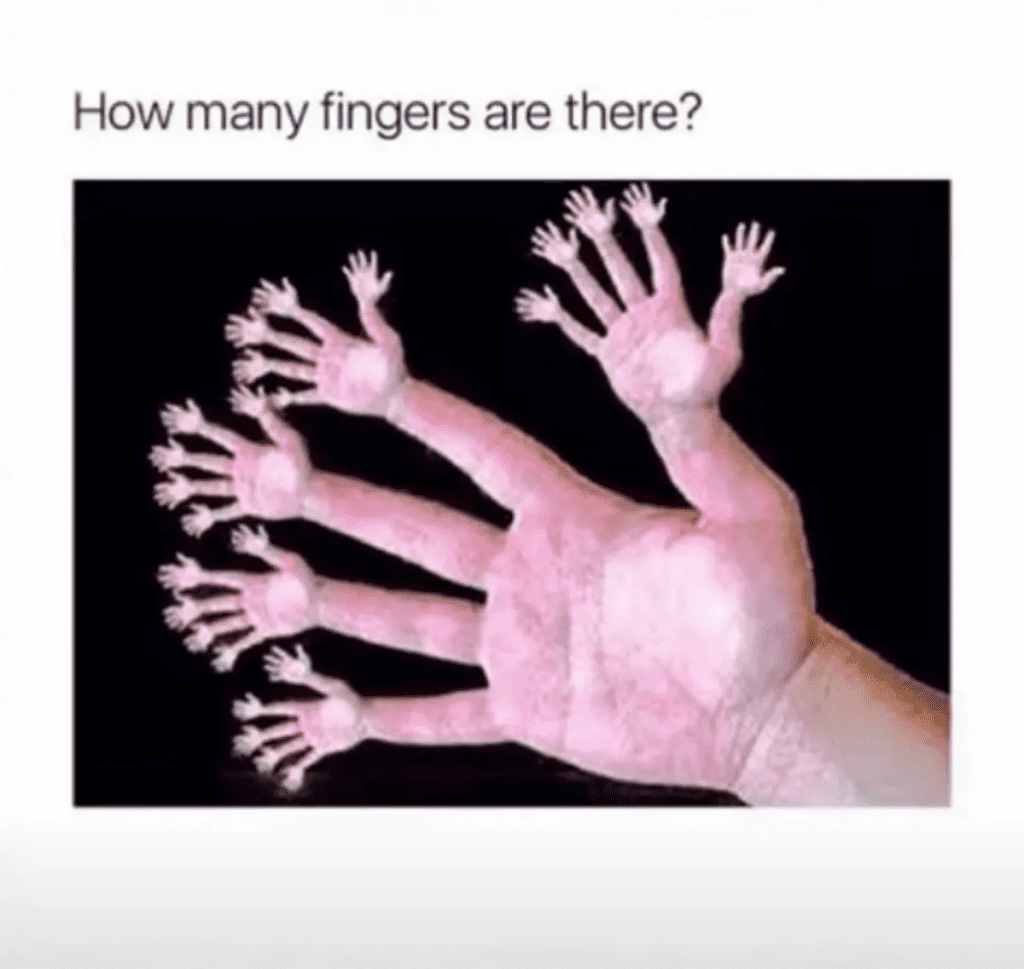In the ever-evolving world of social media, it’s no surprise that the latest brain-teasing optical illusion has taken the internet by storm. Originating from the popular Instagram account @unseenillusions, this mind-bending puzzle has sparked intense debate and left users scratching their heads, all while trying to determine the correct answer.
The illusion in question features a hand, but with a twist – each finger is connected to another hand, which is then connected to yet another hand. The challenge lies in determining the total number of fingers present in this intricate visual puzzle.

As the post has amassed over 400 comments, the responses have been varied and diverse. Some believe the correct answer is 155 fingers, while others have opted to exclude the thumbs, bringing the total down to 150. However, other guesses have ranged from 130 to 160, 175, and even a staggering 215 fingers.
One user jokingly commented, “More than they should be,” highlighting the sheer complexity and mind-bending nature of this optical illusion. Another added, “I am not counting all of those,” echoing the sentiment of many who have been overwhelmed by the task.
After carefully analyzing the image and considering the various responses, the correct answer is 155 fingers. This solution comes from the careful counting of 31 hands, each with 5 fingers, resulting in the total of 155 fingers.
Solving this kind of visual puzzle requires a sharp mind and keen analytical thinking skills. Your ability to accurately determine the correct answer would indicate a high level of cognitive capability, demonstrating your prowess in perceiving and processing complex information.
Now, let’s get interactive. Do you have your own answer to this perplexing optical illusion? I’d love to hear your thoughts and insights. Were you able to accurately count the fingers, or did you find yourself stumped, like many others who have encountered this challenge?
Engaging the reader through a conversational tone and rhetorical questions helps to create a more personalized and relatable experience. By inviting the reader to share their own perspectives, we can foster a sense of community and encourage active participation in the discussion.
To further enhance the reader’s understanding, let’s explore an analogy. Imagine a tangled web of hands, each finger intricately connected to another, creating a puzzle that challenges our perception of reality. Much like unraveling a complex knot, solving this optical illusion requires a methodical approach and a keen eye for detail.
While the topic at hand may be intricate, it’s important to maintain clarity and concision in our writing. By keeping the language simple and easy to follow, we can ensure that the reader remains engaged and able to grasp the key concepts without becoming overwhelmed.
In conclusion, this viral optical illusion has once again demonstrated the remarkable versatility and complexity of the human mind. By challenging our perception of reality and pushing the boundaries of our cognitive abilities, it has sparked a global conversation and highlighted the importance of analytical thinking and problem-solving skills.
Whether you were able to solve the puzzle or not, the mere act of engaging with this brain-teasing challenge is a testament to the power of the human mind. As we continue to explore the world of optical illusions and visual puzzles, let us embrace the opportunity to expand our understanding and celebrate the remarkable capabilities of the human intellect.


